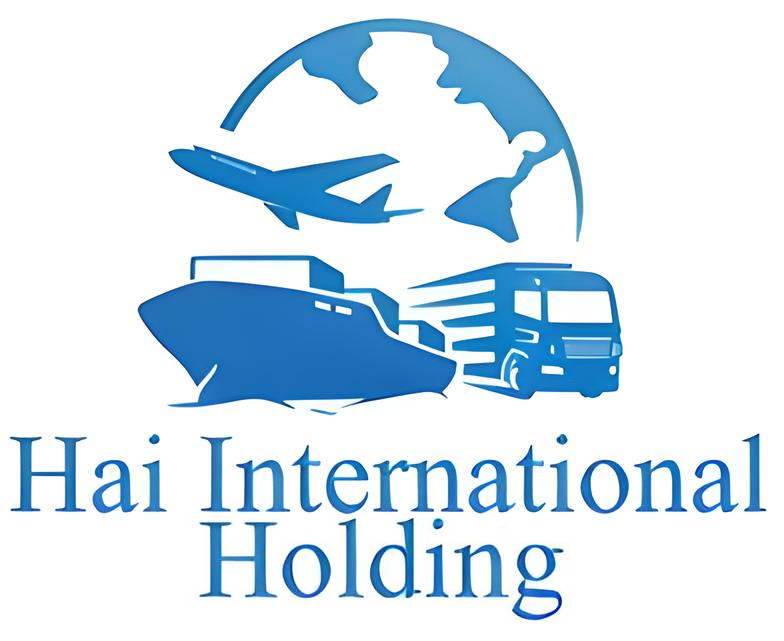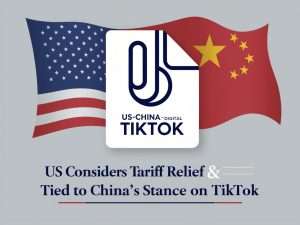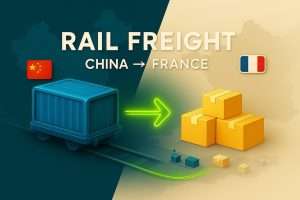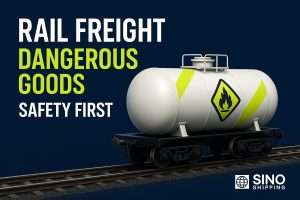Introduction
Battery Cargo: The Silent Revolution in the Shipping World
In the hustle and bustle of today’s global trade, there’s a silent revolution happening right under our noses: the rise of battery cargo. Amidst towering containers and massive shipments, these seemingly inconspicuous packages are driving some of the most dynamic changes in the shipping industry.
Why all the fuss about batteries, you ask? Consider this: in 2020, the global battery market was valued at an astounding $120 billion, and it’s projected to surge even further. From powering our indispensable smartphones to fueling the next generation of electric vehicles, batteries are becoming the lifeblood of modern society.
However, as with all precious cargos, they come with their own set of challenges. Regulations, safety concerns, and the intricate nuances of transporting batteries make this a uniquely demanding segment of the shipping world. And in this realm, precision, knowledge, and experience reign supreme.
Enter companies like HAI International Holding, seasoned veterans in navigating the complex maze of battery cargo logistics. Leveraging their expertise can make the difference between a smooth shipping experience and a logistical nightmare.
But before we delve deeper, let’s pause and reflect: What propelled battery cargo to its current pedestal? And more importantly, how can businesses, big or small, harness its potential to the fullest? Stick around as we unravel the intricacies of the battery cargo revolution.
Why Batteries Are the Powerhouses of Modern Trade
The Unstoppable Surge of Electronic Devices
It’s hard to imagine a world without our trusty electronic devices. Just a decade ago, the average person owned approximately 3 connected devices. Fast forward to 2022, and that number has catapulted to around 10 devices per person. This explosion isn’t just limited to smartphones or laptops. Think smartwatches, fitness trackers, and even smart refrigerators. At the heart of all these gadgets? Batteries. They provide the uninterrupted power these devices need to serve us in our daily routines, making them an integral part of our tech-driven society.
The Global Shift Towards Electric Vehicles
While Elon Musk’s Tesla has become almost synonymous with electric vehicles (EVs), the truth is, the shift towards EVs is a global phenomenon. In 2021, over 3 million electric vehicles were sold worldwide, representing a growth of more than 40% from the previous year. With countries setting aggressive targets to phase out gasoline cars, the demand for EV batteries is only going to skyrocket. And as the battery technology evolves, so does the challenge of shipping these powerhouses safely and efficiently.
Renewable Energy Storage: Batteries at the Forefront
Beyond devices and vehicles, there’s another domain where batteries are proving their mettle: renewable energy storage. Solar and wind energy are fantastic, but there’s one major hitch: they’re inconsistent. The sun doesn’t always shine, and the wind doesn’t always blow. Batteries, especially large-scale storage solutions, are bridging this gap, storing energy during peak times and releasing it when there’s a lull. By 2025, the energy storage market is predicted to reach a staggering $500 billion, emphasizing the irreplaceable role batteries play in our sustainable future.
Unpacking the Complexity: Why Is Importing Battery Cargo So Delicate?
Composition of Modern Batteries: What’s Inside Matters
At a glance, a battery might seem simple — just another component. But delve a little deeper, and it’s a marvel of modern engineering. Today’s batteries, especially those used in high-end electronics and EVs, are complex structures made of various materials, some of which can be hazardous. Elements like lithium, cobalt, and nickel, while excellent for storing energy, can pose risks if not handled with care. Their specific compositions and the reactions they undergo make the process of transporting them a task requiring meticulous attention.
The Volatile Nature of Lithium-Ion Batteries
Lithium-ion batteries, the stars of the battery world, are revered for their high energy density and long lifespan. However, they come with a catch. They’re sensitive to temperature changes, physical damage, and improper handling. There have been instances, albeit rare, where mishandled or damaged lithium-ion batteries have led to fires or explosions. This volatile nature necessitates stringent safety protocols, specialized packaging, and comprehensive knowledge when importing them, underlining the delicacy of battery cargo logistics.
The Mosaic of International Regulations
IATA Guidelines for Battery Shipments
The International Air Transport Association (IATA) stands as a beacon in the global shipping landscape, laying down guidelines that are nearly universally acknowledged. When it comes to battery shipments, their regulations are nothing short of comprehensive. For instance, lithium-ion batteries, due to their potential risks, have to adhere to specific packaging, labeling, and testing standards. Documentation is another crucial area; every shipment must include precise data about the battery’s type, capacity, and manufacturer. Any oversight? And the shipment could face delays, fines, or even rejections.
Regional Variations: Europe, North America, and Asia
While IATA’s guidelines provide a global baseline, when diving into the regional specifics, things can get a tad more intricate. Europe’s regulations, governed by the European Aviation Safety Agency (EASA), may include additional layers of safety protocols. Meanwhile, North America, particularly the U.S., has its own set of stipulations under the Federal Aviation Administration (FAA). And then there’s Asia, a powerhouse in battery manufacturing, with countries like China and South Korea having bespoke regulations that exporters and importers must be acutely aware of. Navigating this mosaic requires an in-depth understanding of each region’s nuances and a strategic approach to compliance.
HAI International Holding: Mastery in Battery Logistics
Proven Track Record in Safe Battery Transit
When it comes to the intricacies of battery logistics, HAI International Holding isn’t just another player; they’re a force to be reckoned with. With a track record that spans years, they’ve successfully maneuvered thousands of battery shipments across the globe, ensuring each one reaches its destination safely and efficiently. Their expertise isn’t just theoretical; it’s cemented with real-world success stories, from delivering EV batteries to Europe’s bustling automotive hubs to ensuring a timely supply of smartphone batteries to North America’s tech giants.
Customized Solutions: Every Battery Shipment is Unique
In the world of battery logistics, there’s no one-size-fits-all solution. And this is where HAI International Holding truly shines. Recognizing that every battery shipment comes with its own set of challenges and requirements, they offer customized solutions tailored to the specific needs of the cargo. Whether it’s adhering to the strict regulations of a particular region, ensuring optimal packaging to minimize risks, or navigating the complexities of cross-border customs, HAI International Holding’s approach is as unique as the cargo they handle, setting them leagues apart in the logistics arena.
A Step-by-Step Guide to Importing Battery Cargo
Documentation: The First Pillar of Smooth Transits
In the intricate ballet of battery cargo logistics, the first move is always about documentation. Think of it as the passport for your cargo. Without the right documents, your battery shipment might as well be grounded. Key documents include Battery Test Reports, which attest to the battery’s safety standards, and Material Safety Data Sheets detailing the battery’s chemical composition. Another crucial document? The Air Waybill (AWB), acting as a ticket for your battery cargo. Remember, each region might require additional papers, so always stay updated and double-check requirements to ensure your cargo’s smooth voyage.
Safeguarding Cargo: Best Packing Practices
When shipping batteries, especially those of the lithium-ion variety, the package isn’t just a container; it’s a protective shield. Ensuring that batteries are insulated from each other and placing them in rigid boxes minimizes the risk of short-circuits. Ventilation is also crucial, allowing any potential gases to escape. Additionally, leveraging shock-absorbing materials can prevent any physical damage during transit. The golden rule? Always prioritize safety over aesthetics or cost-cutting.
Navigating Customs: Tips and Tricks to Speedy Clearances
Customs clearance is where many shipments face unexpected halts. The key to a smooth customs experience? Preparation. Familiarize yourself with destination country regulations and have all documents readily available. Did you know that some countries, like South Korea, have stricter import thresholds for certain battery types? Staying informed can save you precious time. Also, consider working with a local customs broker, especially if you’re new to the region. Their expertise can expedite clearances and help avoid unforeseen hiccups.
The Financial Landscape: Demystifying Costs
The Variables Impacting Shipping Prices
Shipping batteries isn’t just about logistics; it’s also a financial puzzle. Numerous factors play into the final cost. The weight and volume of the shipment, of course, but also the mode of transport. Air freight, for instance, might be faster but often pricier than sea freight. Then there’s the type of battery. High-capacity batteries might invite additional safety charges. Add to this mix variables like insurance costs, seasonal demand fluctuations, and specific carrier fees, and you have a complex web to navigate.
Decoding the Fine Print: Hidden Costs Unveiled
Ever received an invoice that’s significantly higher than the initial quote? Welcome to the world of hidden costs. These can range from detention and demurrage fees (when your shipment overstays its welcome at a port) to administrative charges that weren’t explicitly mentioned upfront. Not to forget, potential penalties for incorrect documentation. The best way to shield yourself? Always ask for a detailed breakdown of costs before confirming a shipment and keep an eye out for any vague line items. Knowledge truly is your best defense against unforeseen expenses.
Overcoming Common Challenges in Battery Cargo Shipping
Addressing Safety Concerns: Fires, Leaks, and More
When it comes to battery cargo shipping, safety isn’t just a consideration; it’s the centerpiece. Fires and leaks aren’t merely hypothetical; they’ve been the culprits behind some of the most notable shipping incidents. Lithium-ion batteries, due to their high energy density, can overheat, leading to what’s known as thermal runaway – a rapid, uncontrolled chemical reaction resulting in high temperatures. So, how do industry leaders mitigate these risks? For one, by ensuring rigorous battery testing before shipping. Additionally, employing fire-resistant packaging and careful placement within containers can reduce the chances of fire outbreaks. Pro tip? Always prioritize safety protocols, even if they mean added costs or time.
The Role of Tech: Advanced Tracking and Temperature Monitoring
Modern challenges require modern solutions. Advanced tracking isn’t just about knowing where your shipment is; it’s about real-time updates that can preemptively address issues. For instance, if a shipment gets stuck at a particular port, timely notifications can help adjust schedules. But tracking is just the tip of the iceberg. Temperature monitoring is paramount for battery shipments. Even slight fluctuations can impact battery health. Innovations like IoT-enabled sensors provide live temperature data, ensuring that shipments remain within the optimal temperature range throughout transit.
Case Studies: Real-world Examples of Successful Battery Imports
An E-bike Company’s Journey with HAI International Holding
The booming e-bike market means a skyrocketing demand for batteries. One European e-bike manufacturer faced the daunting challenge of importing massive quantities of batteries from Asia. Enter HAI International Holding. Right from understanding the manufacturer’s unique requirements to ensuring top-notch packaging and safety protocols, HAI International Holding was on top of its game. The result? Zero delays and a seamless import process, despite the complexities of navigating various regulatory landscapes. The manufacturer not only saved on potential delay costs but also ensured timely deliveries to their European clientele.
Emergency Battery Shipment: A Success Story
Deadlines can be tight, but in the world of tech, sometimes they’re next to impossible. A renowned smartphone company faced a crisis when a major product launch was on the horizon, but there was a shortage of batteries. They needed a swift, safe, and efficient battery shipment from China to the US within days. With the clock ticking, the company turned to a seasoned logistics provider. Through expedited air freight, rigorous safety checks, and real-time tracking, the shipment reached its destination ahead of schedule. The product launch? A resounding success, thanks to timely battery imports.
Predicting the Future: Innovations in Battery Cargo Imports
Eco-friendly Packaging Solutions on the Horizon
In an age where the environment takes center stage, sustainability is more than a buzzword—it’s a mandate. And the battery cargo industry isn’t immune to this shift. As we sail into the future, there’s a burgeoning focus on eco-friendly packaging. This isn’t just about recyclable materials; it’s about designs that minimize waste, use fewer resources, and yet don’t compromise on safety. Picture this: biodegradable insulators that offer the same protection as synthetic ones but dissolve harmlessly once their job is done. Or consider modular packaging systems, where components can be reused across multiple shipments. The takeaway? Tomorrow’s battery shipments might be greener than you think.
Evolving International Regulations: What to Expect?
The realm of international shipping is no stranger to regulations. But with rapid technological advancements and the ever-increasing ubiquity of batteries, changes are afoot. New safety discoveries might mean stricter guidelines for lithium-ion batteries. Moreover, as countries increasingly focus on reducing carbon footprints, there might be incentives (or penalties) tied to the environmental impact of shipments. For those in the shipping sector, staying updated isn’t just advisable—it’s imperative. Remember, in the world of international trade, knowledge isn’t just power; it’s profitability.
Conclusion
Embracing the Future: The Indispensable Role of Battery Cargo Imports
The world, as we know it, is electrifying. From the phones in our pockets to the cars on our roads, batteries are the silent force powering this revolution. As demand surges, so does the importance of importing these tiny powerhouses safely and efficiently. But it’s not just about meeting today’s needs. As we’ve seen, the landscape of battery cargo imports is in flux—new challenges, innovative solutions, and evolving regulations. For businesses and logistics providers alike, the future is clear: adapt, innovate, and embrace the pivotal role of battery cargo. After all, in this electrified age, those who master the art of battery shipments won’t just thrive—they’ll lead.
FAQs
Are all batteries considered hazardous for shipping?
Interestingly, not all batteries are painted with the same brush. While it's true that certain types, especially lithium-ion batteries, are classified as hazardous due to their propensity for thermal runaway, others like alkaline or nickel-metal hydride (NiMH) typically don't pose the same risks. It's vital to recognize the type and specifications of the battery in question. However, irrespective of the category, ensuring safe packaging and adherence to shipping guidelines is paramount.
How does HAI International Holding ensure 100% safety?
Safety is HAI International Holding's non-negotiable priority. The company employs a multi-pronged approach: rigorous pre-shipment inspections, usage of industry-approved packaging materials, and continuous training of their personnel on the latest safety protocols. Moreover, with their advanced real-time tracking and temperature monitoring systems, they can address potential issues even before they escalate. Remember, with HAI International Holding, safety isn't just a policy; it's a promise.
What’s the best way to keep battery imports cost-effective?
Staying cost-effective doesn't necessarily mean cutting corners. Instead, focus on efficient planning and strategic partnerships. For instance, consolidating shipments can significantly reduce per-unit costs. Moreover, partnering with experienced forwarders like HAI International Holding can offer valuable insights into market trends and potential cost-saving opportunities. It's also worth investing in compliance training. After all, avoiding regulatory fines or delays can save more in the long run than any upfront cost-cutting measure.
How to keep up with the ever-evolving import regulations?
Staying updated in the fast-paced world of import regulations can be a challenge. However, a few strategies can help. Subscribing to industry newsletters, attending international trade seminars, and fostering strong relationships with regulatory bodies are excellent starting points. Another pro tip? Partner with logistic providers like HAI International Holding, who have dedicated teams to monitor and navigate the ever-shifting regulatory landscape. Their expertise can be your competitive edge.
Do shipping insurance policies cover battery damages?
Insurance coverage can vary based on the provider and the specific policy in question. Generally, damages caused by external factors like mishandling or accidents are covered. However, inherent battery defects or damages due to non-compliance with shipping regulations might not be. It's crucial to thoroughly review the policy terms and, if in doubt, seek clarity. Engaging with specialized insurance brokers who understand the intricacies of battery shipments can also provide a clearer picture.











